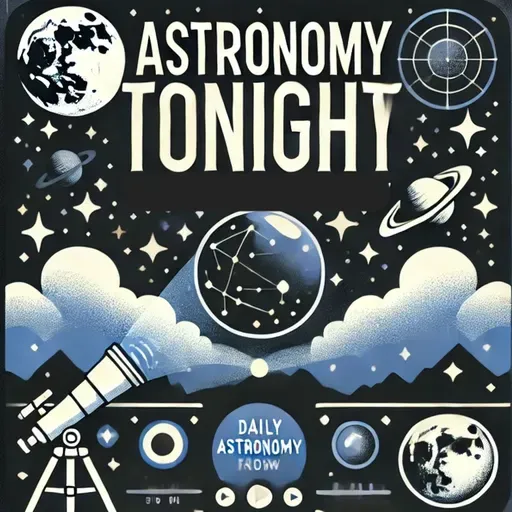
About
This is your Astronomy Tonight podcast.
On this day, August 30th, back in 1983, astronomers made a groundbreaking discovery that sent ripples through the scientific community. Using the Infrared Astronomical Satellite (IRAS), researchers detected an excess of infrared radiation around the star Vega in the constellation Lyra. This seemingly innocuous observation turned out to be the first evidence of a debris disk around a main-sequence star other than our Sun.
Now, you might be thinking, "A debris disk? That doesn't sound very exciting." But hold onto your telescopes, folks, because this was a big deal! This discovery provided the first tangible evidence that other star systems might have the necessary building blocks for planet formation. It was like catching a glimpse of a cosmic construction site, where planets might be under development.
The Vega debris disk, as it came to be known, is essentially a ring of dust and debris orbiting the star. Think of it as a celestial doughnut, if you will, but instead of sprinkles, it's made up of rocks, ice, and dust. This disk extends from about 80 to 120 astronomical units from Vega, which is roughly twice the size of our solar system's Kuiper Belt.
The discovery sparked a frenzy of research and observations. Astronomers began searching for similar disks around other stars, and lo and behold, they found them! It turns out that debris disks are quite common, especially around young stars. This has given us valuable insights into how planetary systems form and evolve.
But wait, there's more! The Vega debris disk discovery didn't just stop at changing our understanding of planet formation. It also paved the way for the development of new observational techniques and instruments designed specifically to study these faint, dusty rings around distant stars.
So, the next time you look up at the bright star Vega twinkling in the night sky, remember that it's not just a pretty point of light. It's a cosmic laboratory, surrounded by a disk of debris that's helping us unravel the mysteries of how planets come to be. Who knows? There might even be a few planets hiding in that disk, waiting for us to discover them!
And on that note, if you want to keep up with the latest astronomical discoveries and cosmic musings, don't forget to subscribe to the Astronomy Tonight podcast. If you're hungry for more intriguing content across various topics, check out Quiet Please dot AI. Thank you for listening to another Quiet Please Production. Until next time, keep looking up!
On this day, August 30th, back in 1983, astronomers made a groundbreaking discovery that sent ripples through the scientific community. Using the Infrared Astronomical Satellite (IRAS), researchers detected an excess of infrared radiation around the star Vega in the constellation Lyra. This seemingly innocuous observation turned out to be the first evidence of a debris disk around a main-sequence star other than our Sun.
Now, you might be thinking, "A debris disk? That doesn't sound very exciting." But hold onto your telescopes, folks, because this was a big deal! This discovery provided the first tangible evidence that other star systems might have the necessary building blocks for planet formation. It was like catching a glimpse of a cosmic construction site, where planets might be under development.
The Vega debris disk, as it came to be known, is essentially a ring of dust and debris orbiting the star. Think of it as a celestial doughnut, if you will, but instead of sprinkles, it's made up of rocks, ice, and dust. This disk extends from about 80 to 120 astronomical units from Vega, which is roughly twice the size of our solar system's Kuiper Belt.
The discovery sparked a frenzy of research and observations. Astronomers began searching for similar disks around other stars, and lo and behold, they found them! It turns out that debris disks are quite common, especially around young stars. This has given us valuable insights into how planetary systems form and evolve.
But wait, there's more! The Vega debris disk discovery didn't just stop at changing our understanding of planet formation. It also paved the way for the development of new observational techniques and instruments designed specifically to study these faint, dusty rings around distant stars.
So, the next time you look up at the bright star Vega twinkling in the night sky, remember that it's not just a pretty point of light. It's a cosmic laboratory, surrounded by a disk of debris that's helping us unravel the mysteries of how planets come to be. Who knows? There might even be a few planets hiding in that disk, waiting for us to discover them!
And on that note, if you want to keep up with the latest astronomical discoveries and cosmic musings, don't forget to subscribe to the Astronomy Tonight podcast. If you're hungry for more intriguing content across various topics, check out Quiet Please dot AI. Thank you for listening to another Quiet Please Production. Until next time, keep looking up!